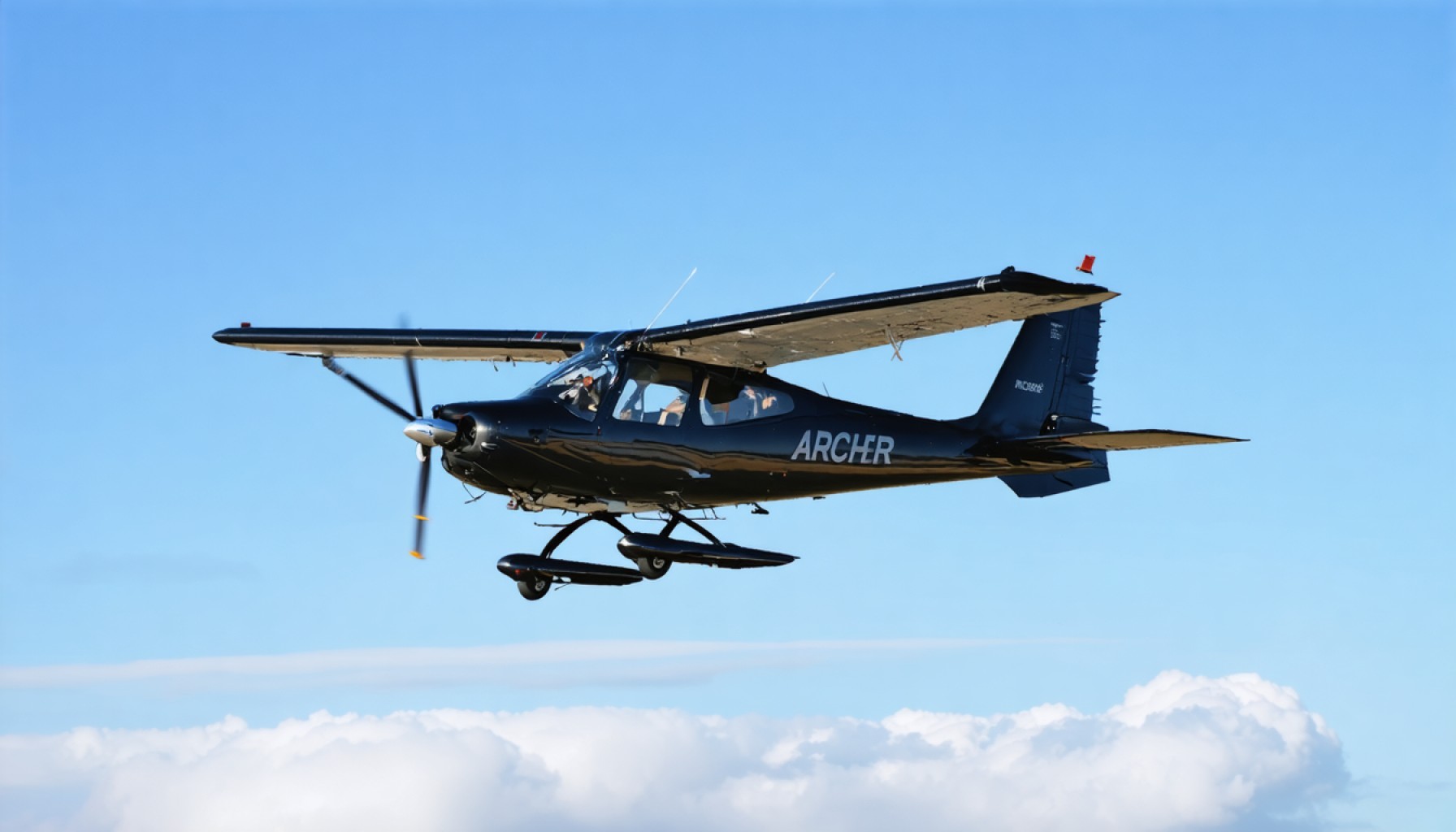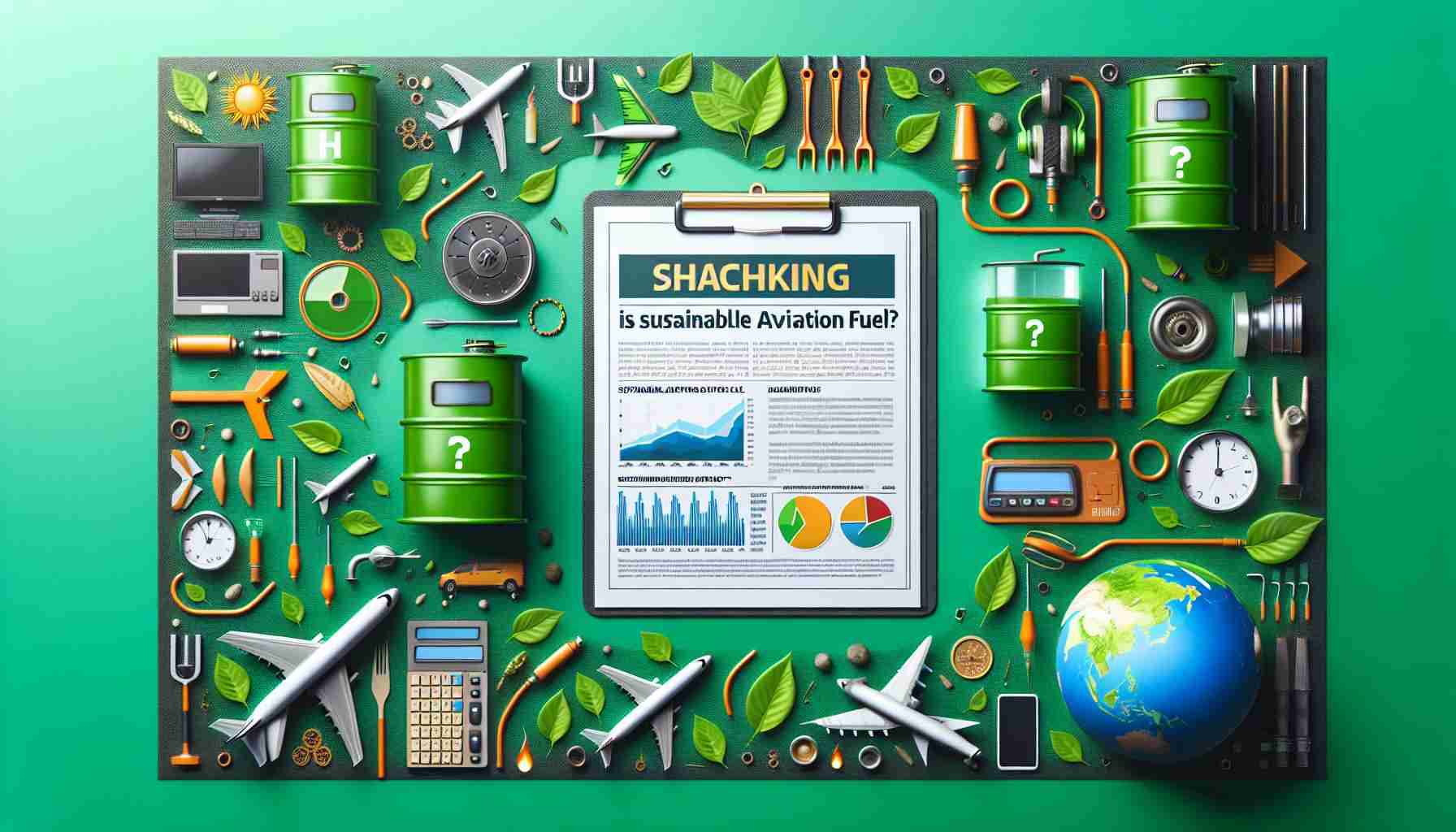- Archer Aviation is a prominent player in the eVTOL sector, facing challenges due to increased tariffs and a shaky global economy.
- The company is buoyed by a significant cash reserve, including $302 million in capital, but reported a $537 million net loss in 2024 with no sales revenue.
- Forecasts for 2025 project a $37 million revenue, yet profitability remains elusive.
- Manufacturing ambitions are hampered by potential 32% tariffs on Taiwanese battery imports, impacting production costs.
- Archer’s partner, Stellantis, faces its own tariff-related issues that could affect their collaboration.
- Market volatility and the threat of a U.S. recession add further uncertainty to Archer’s operational scale-up efforts.
- Despite challenges, Archer continues to strive for innovation and adaptability in a turbulent economic landscape.
Archer Aviation, the ambitious trailblazer in the realm of electric vertical takeoff and landing (eVTOL) aircraft, finds itself weathering unpredictable skies. With the Trump administration’s escalating tariffs and an unsteady global economy casting shadows over Archer’s horizon, the company must calibrate its compass carefully in order to soar successfully.
Shedding light on Archer’s present circumstances reveals a company prepping for takeoff but grounded in some harsh realities. Buoyed by a potent $302 million capital influx and a liquid reserve of around $1 billion as the year began, Archer laid promising foundations for its innovative Midnight aircraft. CEO Adam Goldstein exuded optimism, highlighting this as the company’s most robust liquidity position yet. Yet, echoing behind these financial fortifications is a glaring absence of actual sales revenue. In 2024, Archer reported a staggering $537 million GAAP net loss without a dollar’s worth of sales to mitigate the sinkhole.
With optimism fueling its engines, Archer aspires to deliver its first revenue-generating Midnight aircraft. Analysts cautiously forecast a $37 million revenue windfall in the forthcoming year— a modest sum that leaves profitability still out of reach. The company’s ambitions to ramp up production out of its Covington, Georgia, facility—envisioning a whopping 650 aircraft by 2030—are hindered by considerable turbulence from external economic forces.
Archer’s manufacturing operations face headwinds amplified by unforeseen complexities. Batteries, the heart of the Midnight, are sourced from Taiwan’s Molicel, placing Archer on shaky ground due to a potential leap in tariffs on Taiwanese imports from 10% to a crippling 32% if trade agreements aren’t struck soon. The unfurling consequences may ripple through Archer, inflating costs at a time when resilience is paramount.
Compounding Archer’s precarious position is the plight of its partner, Stellantis. As a linchpin in Archer’s manufacturing strategy and with significant investment stakes, Stellantis grapples with its own tariff-related challenges, temporarily halting production in Mexico and Canada. Economic strain within Stellantis could reverberate through its partnership with Archer, restricting future collaborations.
Against this stormy backdrop, Archer shares in the whirlwind of stock market vicissitudes. The larger threat looms not only from tariffs but the specter of a looming recession in the U.S., exacerbating an already volatile environment. Archer’s endeavor to scale its operations could face delays, with each twist in the market potentially swaying investor sentiment and the company’s share price.
Yet, as turbulence tests their mettle, Archer must navigate these uncharted skies with dexterity. The future demands innovation, prudence, and adaptation to global economic shifts. Beneath uncertainty lies opportunity; amidst adversity, the chance to redefine horizons. The skies may be cloudy, but Archer’s compass must remain steady. This is a crucial moment of flight or fight—an unwavering journey towards a promising sky.
Can Archer Aviation Overcome Economic Turbulence to Revolutionize Air Travel?
Introduction
Archer Aviation is pioneering the electric vertical takeoff and landing (eVTOL) aircraft landscape, striving to redefine urban air mobility. Amidst tariff challenges and economic unpredictability, Archer is determined to soar despite headwinds. Here, we delve deeper into Archer’s situation, explore industry trends, evaluate operational risks, and discuss actionable insights for its future.
Understanding Archer’s Current Landscape
Financial Health and Challenges
– Funding and Revenue: Archer secured $302 million in funding and had around $1 billion in liquidity entering the year. Nevertheless, it recorded a $537 million GAAP net loss in 2024 due to a lack of sales revenue.
– Projected Revenue: Analysts predict $37 million in revenue for the Midnight aircraft in the next year, insufficient for profitability.
Economic and Operational Risks
– Tariff Impact: Tariffs on imports from Taiwan’s Molicel, Archer’s battery supplier, could jump from 10% to 32%, potentially inflating costs.
– Partnership Pressures: Stellantis, a crucial manufacturing partner, faces its own tariff-related production challenges, potentially affecting its alliance with Archer.
– Market Volatility: Economic uncertainty and potential recession threaten Archer’s market position, impacting investor sentiment and potentially affecting stock prices.
Key Questions and Insights
How Can Archer Navigate These Challenges?
1. Diversifying Supply Chains: To mitigate tariff impacts, Archer could explore alternative suppliers or negotiate long-term contracts to secure stable pricing.
2. Strengthening Partnerships: Bolstering its alliance with Stellantis by sharing innovations and creating joint ventures could galvanize mutual growth.
3. Innovation and Adaptation: Archer’s R&D should focus on enhancing aircraft technologies that boost efficiency and reduce dependency on high-tariff components.
What Are the Industry Trends Shaping the eVTOL Market?
– Technological Advancements: Advances in battery technology and autonomous systems continue to drive innovation in the eVTOL sector.
– Sustainability Focus: There is increasing emphasis on creating sustainable urban air mobility solutions, aligning with global environmental goals.
– Growing Investments: Despite economic uncertainties, investment in urban air mobility remains robust, with several startups attracting significant capital.
Comparisons and Competitor Outlook
– Archer vs. Competitors: Companies like Joby Aviation and Lilium are also significant players in the market. Both focus on similar technologies, but differ in business models and operational strategies.
– Operational Scalability: Joby Aviation has prioritized early certification, while Lilium aims for international expansion, each pursuing distinct paths to market entry.
Actionable Recommendations
1. Increase Flexibility: Adapt operational plans to accommodate unexpected economic changes and supply chain disruptions.
2. Engage Investors: Communicate transparently with investors about challenges and strategic responses to maintain confidence and enthusiasm.
3. Leverage Government Policies: Capitalize on government incentives for green innovation and sustainable transportation to offset cost pressures.
Conclusion
Archer Aviation stands at a crossroads, facing significant economic and operational challenges. By innovating and adapting to the evolving landscape, Archer can navigate these turbulent skies and pave the way for a new era of urban air mobility. The company’s journey emphasizes the importance of resilience, strategic partnerships, and technological innovation.
_For more insights into Archer’s journey and the urban air mobility market, explore Archer Aviation._



